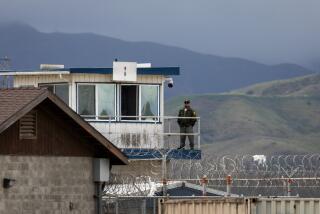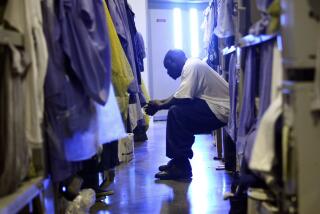Editorial: Release people from jail in the middle of the night? Not without safe options

It’s been a decade since a young woman showed up at the seaside Malibu restaurant Geoffrey’s one evening, charming other diners but alarming the staff when she couldn’t pay her $89 bill and spoke of being from Mars. Sheriff’s deputies were called, and they took her to the Malibu/Lost Hills station, where she was booked on two misdemeanor charges and released a little past midnight without her cell phone or purse, both of which were in her impounded car. She walked out into the darkness, near Malibu Canyon, and vanished. Her skeletal remains were found in the canyon 11 months later.
The fate of Mitrice Richardson — whose cause of death is still unknown — became a tragic and troubling reminder that releasing someone from jail in the dead of night, whether that’s near a remote canyon or on a city street, can be dangerous. Last year, another young woman, Julia St. Louis, was released from Alameda County’s Santa Rita Jail in Dublin, Calif., at 1:30 a.m. without money or a cell phone and was found dead from a drug overdose the next morning at a BART station. After her death, a group of women created an advocacy group and invited State Sen. Nancy Skinner (D-Berkeley) to join them on a 1.9-mile nighttime march through the deserted streets from the jail to that transit station. Troubled by St. Louis’ death and the desolate walk the young woman probably took, Skinner authored Senate Bill 42, the Getting Home Safe Act.
The bill, which passed both houses of the Legislature, would have required county jails to offer anyone being released at night the option of remaining voluntarily in a cell or waiting area until daylight. It would also have required them to offer a cell phone charger and access to a phone for free. Sheriff’s stations with lock-up facilities would also have been required to offer that choice to anyone being released.
It’s unfortunate that Gov. Gavin Newsom didn’t go on that nighttime march with Skinner. He vetoed the bill, saying that while late-night jail releases were, indeed, unsafe, they should be addressed with more approaches that didn’t leave the state paying for costs — holding people in jail overnight if they choose — that should be borne by county sheriff’s departments.
But that misplaced frugality puts hundreds of released people in potential danger. What Senate Bill 42 called for was modest. An earlier requirement that the sheriff’s department provide transportation to people being released late was stripped out of the bill. Most, if not all, of the sheriff’s department stations in Los Angeles County already have some basic waiting area. The bill wouldn’t have required wholesale renovation.
Sheriff’s departments cannot forcibly hold people longer than required by law, nor would this bill have asked them to. And nobody released from jail or a station house wants to hang around much beyond release time. But if you find yourself released with little or no money at an hour when you have few family or friends to call, the offer of a place to wait until daylight may seem sensible.
In fact, 10 years ago, when Richardson was released, sheriff’s station personnel did offer to let her wait there until daylight. She declined the offer and left.
Since then, people released from jails and sheriff’s stations in L.A. County are all given their personal property before they leave, according to remarks that Sheriff Alex Villanueva made recently.
But that’s not enough. Skinner’s bill would have added reasonable protections.
We understand that requiring sheriff’s stations to offer people rides to transit stations or homes may not be feasible. But last year the San Francisco Sheriff’s Department began offering taxi vouchers to people who were released. It’ll be interesting to see how many vouchers are used, what the program costs and whether it seems to make people safer.
It’s neither smart nor ethical for law enforcement agencies to release people into the night — into situations that are notoriously and obviously dangerous. They should at least mitigate the danger by offering people other options than a long desolate walk into the night.
More to Read
A cure for the common opinion
Get thought-provoking perspectives with our weekly newsletter.
You may occasionally receive promotional content from the Los Angeles Times.










